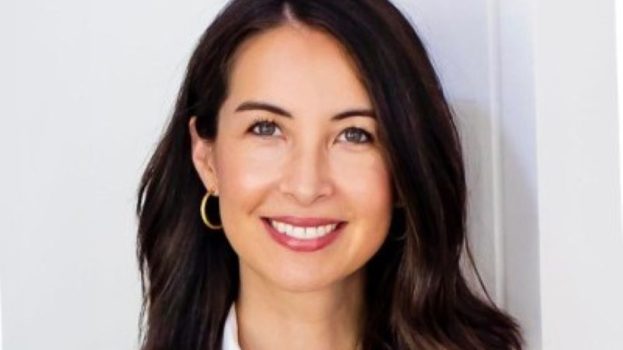 After two decades in the marketing sector, in 2022, Daniella Etienne founded Le Code Switch, a bilingual inclusive marketing agency that works with other agencies and organizations to help them better represent Black, racialized and Indigenous Peoples in their marketing communications. Strategy caught up with Etienne during Black History Month to better understand the meaningful incremental and sustainable changes a company can make beyond the annual observance.
After two decades in the marketing sector, in 2022, Daniella Etienne founded Le Code Switch, a bilingual inclusive marketing agency that works with other agencies and organizations to help them better represent Black, racialized and Indigenous Peoples in their marketing communications. Strategy caught up with Etienne during Black History Month to better understand the meaningful incremental and sustainable changes a company can make beyond the annual observance.
What does Black History Month mean to you?
Celebrating Black History Month is about acknowledging the past – the people that have come before us in Black communities, the people that have made our current presence possible. But it’s also about the future that we’re building. I think a lot of narratives around Black History Month tend to heavily rely on our trauma and on slavery, the part of history that is so triggering, but there are so many beautiful things about our present and the future that a lot of younger people are creating for tomorrow. It’s important to acknowledge the past, but also to be mindful of the present and the fact that we are creating a new future with Black communities as well.
With regards to the marketing industry, what should leaders know about Black History Month?

Daniella Etienne, founder, Le Code Switch
That Black History Month is beyond 28 or 29 days. I find that there is always a heavy push and concentration around it – “What are we going to do?” – and then, once March rolls by we’re no longer the flavour of the month. I would like brands to think about building community partnerships and marketing campaigns with Black people beyond Black History Month. Although this month highlights Black communities in particular, our narratives exist beyond it. I think brands need to keep us top-of-mind throughout the year.
How can the industry make marketing more inclusive?
Inclusive marketing, to me, is making sure that you challenge the biases, stereotypes and narratives that harm and exclude underserved communities – just really rethinking how we can centre their voices and lived experiences in the products that we develop. I often use this line, and it’s a bit cheesy now because I say it so much, but “Nothing about us without us.” Because at the end of the day, if it’s a boardroom filled with white people, they can’t possibly imagine what my lived experience is as a Black woman (or other Black women because there isn’t just one way of being Black).
Oftentimes, it’s really making sure that you consult with the communities that you would like to see reflected in your content. If these people don’t exist within your organization, then seek out external partners to consult and check the pulse. And it’s not with a finished product, but by really engaging them from the beginning of the work. “On behalf of your community, what is this experience or reality like for you?” Rather than making assumptions that are often based on stereotypes.
What is the advertising landscape in Canada like right now with regards to Black representation? Are things getting better?
Not fast enough, and not at a rate that’s acceptable. There’s a lot of Black talent out there. Whether it’s people that can be employed as vendors on sets or people working at marketing agencies, but somehow, they never quite make it to the executive level. There isn’t enough representation within boardrooms. I don’t think there’s enough being done. I actually feel like a lot of people, especially right now, are taking a step back on some of those commitments. We’re seeing a lot of budget cuts that are impacting the DEI teams that were built in 2020. I know that some brands are making a way forward but not enough. Some of the programs that were built at the murder of George Floyd are now being disassembled.
Would you say that there seems to be a stagnation in efforts to drive diversity within leadership?
I wouldn’t say just stagnation. When these announcements were made, a lot of people were skeptical that they would be long-term and that they would be sustainable. A lot of commitments were made by companies that haven’t followed through or haven’t really dug into what it means to create systemic change. It’s one thing to say that you support Black communities and Black Lives Matter at the time of 2020, but, inherently, this is a systemic issue within the marketing industry. They really need to reflect internally at their hiring processes, the teams that they put together, the vendors that they work with, it’s a 360 look at what’s happening internally.
It’s not just about including a Black face or using slang in a campaign to appease Black communities. It’s really about recognizing that there are systemic barriers that prevent young Black people from moving up the ladder at marketing agencies or from being included on vendor request forms from companies. If your content isn’t inclusive to these communities, it’s because you also don’t reflect these communities within your four walls.
What are some steps leaders can take to do better by their Black employees?
If you’re going to hire a Black person just to say that you’ve hired them and you’re not going to be invested in their growth by providing them the tools, the access and the opportunities to succeed and get to a higher level within the company, then you’re really doing that person a disservice. You’re setting them up to fail.
An easy thing that we can all do is provide access and opportunities. Whether I’m going to a senior leadership meeting and can bring someone else, or whether it’s providing an hour of mentorship time. I think these are things that are more tangible and easy for people who are in senior leadership but that they often don’t think about. Oftentimes what leaves out young Black people from the conversation is the fact that they don’t have access. Make a recommendation, make an introduction, invite someone to shadow you on a project where they can gain some experience. I think it’s looking at the opportunities, access and tools around us that oftentimes don’t cost us anything.























